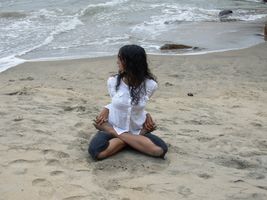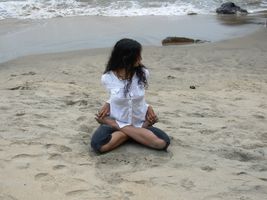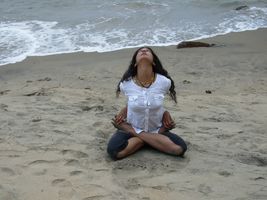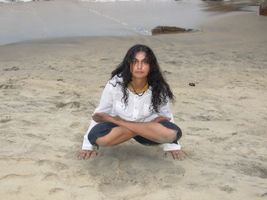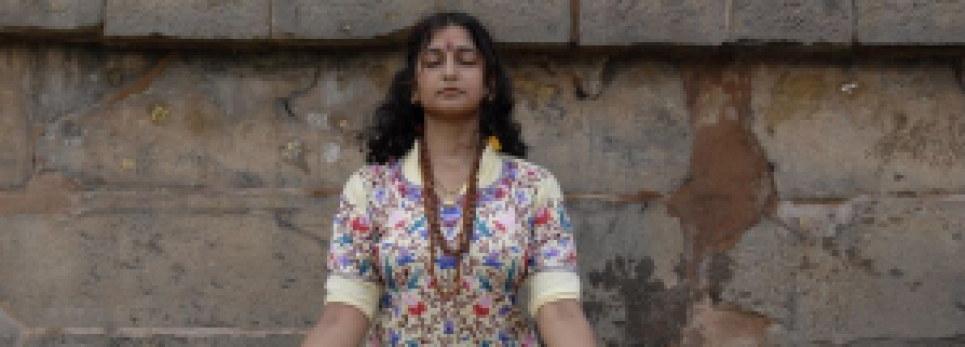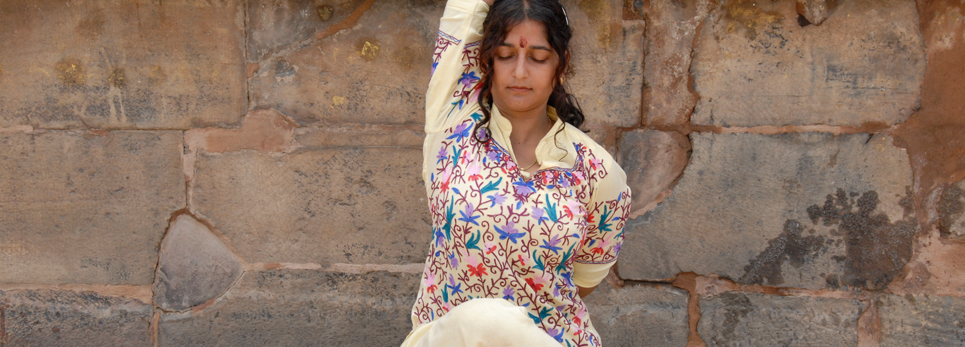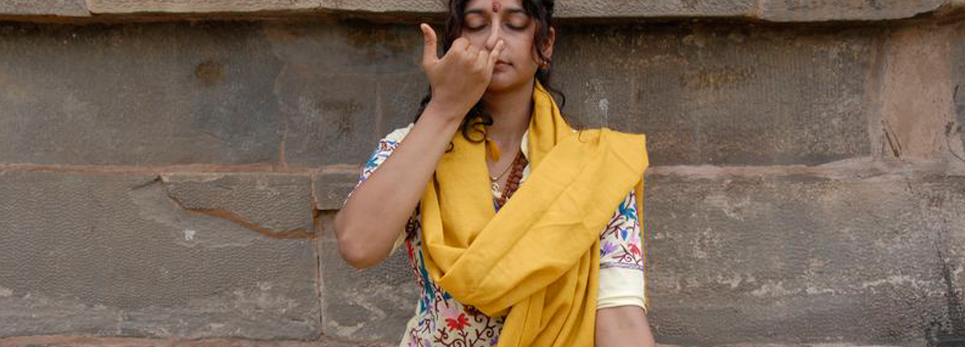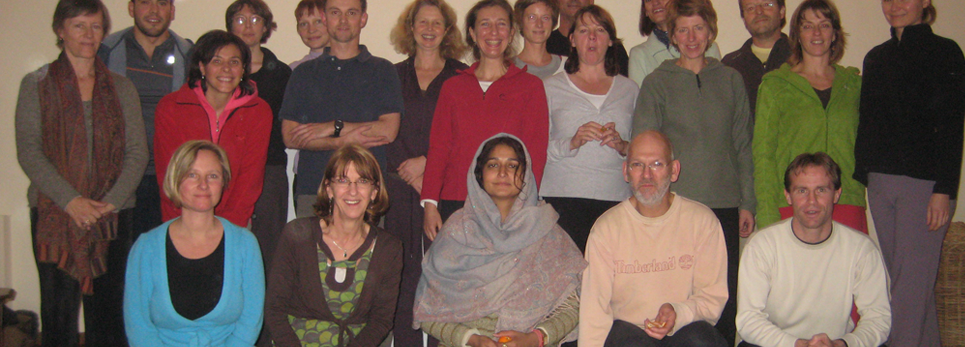The yoga we know today was developed as a part of the tantric civilisation which existed in India and all parts of the world more than ten thousand years ago. In archaeological excavations made in the Indus Valley at Harappa and Mohenjodaro, now in modern Pakistan, many statues have been found depicting deities resembling Lord Shiva and Parvati performing various asana and practising meditation. These ruins were once the dwelling place of people who lived in the pre-vedic age before the Aryan civilisation started to flourish in the Indus subcontinent. According to mythical tradition, Shiva is said to be the founder of yoga and Parvati his first disciple. Lord Shiva is widely considered to be the symbol or embodiment of supreme consciousness. Parvati represents supreme knowledge, will and action, and is responsible for all creation. This force or energy is also known as kundalini shakti, the cosmic force which lies dormant in all beings. […] Tantra is a combination of two words, tanoti and trayati, which mean “expansion” and “liberation” respectively. Therefore, it is the science of expanding the consciousness and liberating the energy. Tantra is the way to attain freedom from the bondage of the world while still living in it. The first step in tantra is to know the limitations and capacities of the body and mind. Next it prescribes techniques for the expansion of consciousness and the liberation of energy whereby individual limitations are transcended and a higher reality experienced. […] In ancient times, yoga techniques were kept secret and were never written down or exposed to public view. They were passed on from teacher or guru to disciple by word of mouth. […] The first books to refer to yoga were the ancient Tantras and later the Vedas which were written about the time the Indus Valley culture was flourishing. Although they do not give specific practices, they allude to yoga symbolically. In fact the verses of the Veda were heard by the rishis, seers, in states of deep, yogic meditation or samadhi and are regarded as revealed scriptures. It is, however, in the Upanishads that yoga begins to take a more definable shape. These scriptures collectively form Vedanta, the culmination of Veda and are said to contain the essence of them. Sage Patanjali’s treatise on raja yoga, the Yoga Sutras, codified the first definitive, unified and comprehensive system of yoga. Often called the eight-fold path, it is comprised of yama, self-restraints, niyama, self-observances, asana, pranayama, pratyahara, disassociation of consciousness from the outside environment, dharana, concentration, dhyana, meditation and Samadhi, identification with pure consciousness. In the 6th century BC, Lord Buddha’s influence brought the ideals of meditation, ethics and morality to the fore and the preparatory practices of yoga were ignored. However, Indian thinkers soon realised the limitations of this view. The yogi Matsyendranath taught that before taking to the practices of meditation, the body and its elements need purifying. He founded the Nath cult and the yogic pose matsyendrasana was named after him. His chief disciple, Gorakhnath, wrote books on hatha yoga in the local dialect and in Hindi. Indian tradition previously required that original texts be written in Sanskrit. In some cases they clothed their writings in symbolism so that only those prepared and ready for a teaching would be able to understand it. One of the most outstanding authorities on hatha yoga, Swami Swatmarama, wrote the Hatha Yoga Pradipika, or “Light on Yoga”, in Sanskrit, collating all extant material on the subject. In doing so, he reduced the emphasis on yama and niyama from hatha yoga, thereby eliminating a great obstacle experienced by many beginners. In the Hatha Yoga Pradipika, Swatmarama starts with the body and only later, when the mind has become more stable and balanced, are self-control and self-discipline introduced. The relevance of yoga today Physical and mental therapy is one of yoga’s most important achievements. What makes it so powerful and effective is the fact that it works on the holistic principles of harmony and unification. Yoga has succeeded as an alternative form of therapy in diseases such as asthma, diabetes, blood pressure, arthritis, digestive disorders and other ailments of a chronic and constitutional nature. Research into the effects of yogic practices on HIV is currently underway with promising results. According to medical scientists, yoga therapy is successful because of the balance created in the nervous and endocrine systems which directly influences all the other systems and organs of the body. For most people, however, yoga is simply a means of maintaining health and well-being in an increasingly stressful society. Asana remove the physical discomfort accumulated during a day at the office sitting in a chair, hunched over a desk. Relaxation techniques help maximise the effectiveness of ever-diminishing time off. In an age of mobile phones, beepers and twenty-four hour shopping, yogic practices make great personal and even business sense. Beyond the needs of individuals, the underlying principles of yoga provide a real tool to combat social malaise. At a time when the world seems to be at a loss, rejecting past values without being able to establish new ones, yoga provides a means for people to find their own way of connecting with their true selves. Through this connection with their real selves it is possible for people to manifest harmony in the current age, and for compassion to emerge where hitherto there has been none. In this respect, yoga is far from simply being physical exercises, rather, it is an aid to establishing a new way of life which embraces both inner and outer realities. However, this way of life is an experience which cannot be understood intellectually and will only become living knowledge through practice and experience. (Swami Satyananda Saraswati, Asana Pranayama Mudra Bandha, Yoga Publications Trust, Munger, Bihar, India, 2006, pp.1-6). 